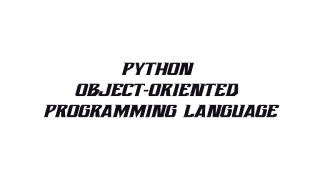Python | Object-Oriented Programming language
Python is a popular high-level programming language that has gained immense popularity in recent years. It was created in 1991 by Guido van Rossum, and has since become one of the most widely used programming languages in the world.
One of the key features of Python is its simplicity and ease of use. The language is designed to be easy to learn and use, with a syntax that is simple and readable. This makes it an ideal choice for beginners who are just starting to learn programming.
Python is also a versatile language that can be used for a wide variety of applications. It is commonly used for web development, scientific computing, data analysis, and machine learning, among other things. In fact, Python has become the de facto language for data science and machine learning, thanks to its powerful libraries and tools such as NumPy, Pandas, and TensorFlow.
One of the key benefits of Python is its strong community and ecosystem of tools and libraries. There are numerous libraries available for Python developers, making it easy to create complex applications with minimal effort. For example, the Django framework is a popular choice for web development in Python, while the Pygame library is used for game development.
Another advantage of Python is its cross-platform compatibility. Python programs can be run on any platform that has a Python interpreter installed, which includes most major operating systems such as Windows, macOS, and Linux. This makes it an attractive choice for developers who want to create applications that can be used across multiple platforms without needing to create separate versions for each one.
Python is also known for its emphasis on readability and maintainability. The language is designed to be easy to read and understand, which makes it easier for developers to maintain and modify their code over time. This is particularly important for large-scale projects where code maintenance can be a significant challenge.
Despite its many benefits, Python is not without its drawbacks. One of the most common criticisms of Python is its performance, as it can be slower than some other programming languages such as C or C++. This can be a concern for applications that require high performance, such as real-time systems or video games.
Another drawback of Python is its memory usage. Python programs typically require more memory than programs written in other languages, which can be a concern for applications that need to run on limited hardware.
Despite these drawbacks, Python remains a popular choice for developers around the world, thanks to its versatility, simplicity, and strong community. As technology continues to evolve, it is likely that Python will continue to play a major role in the development of software for years to come.


Comments
Post a Comment